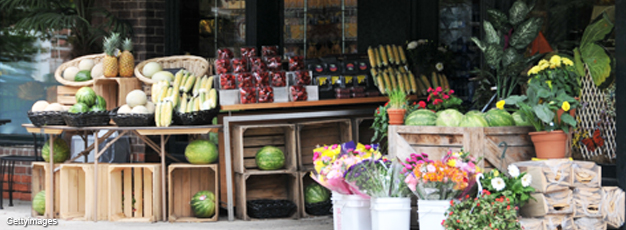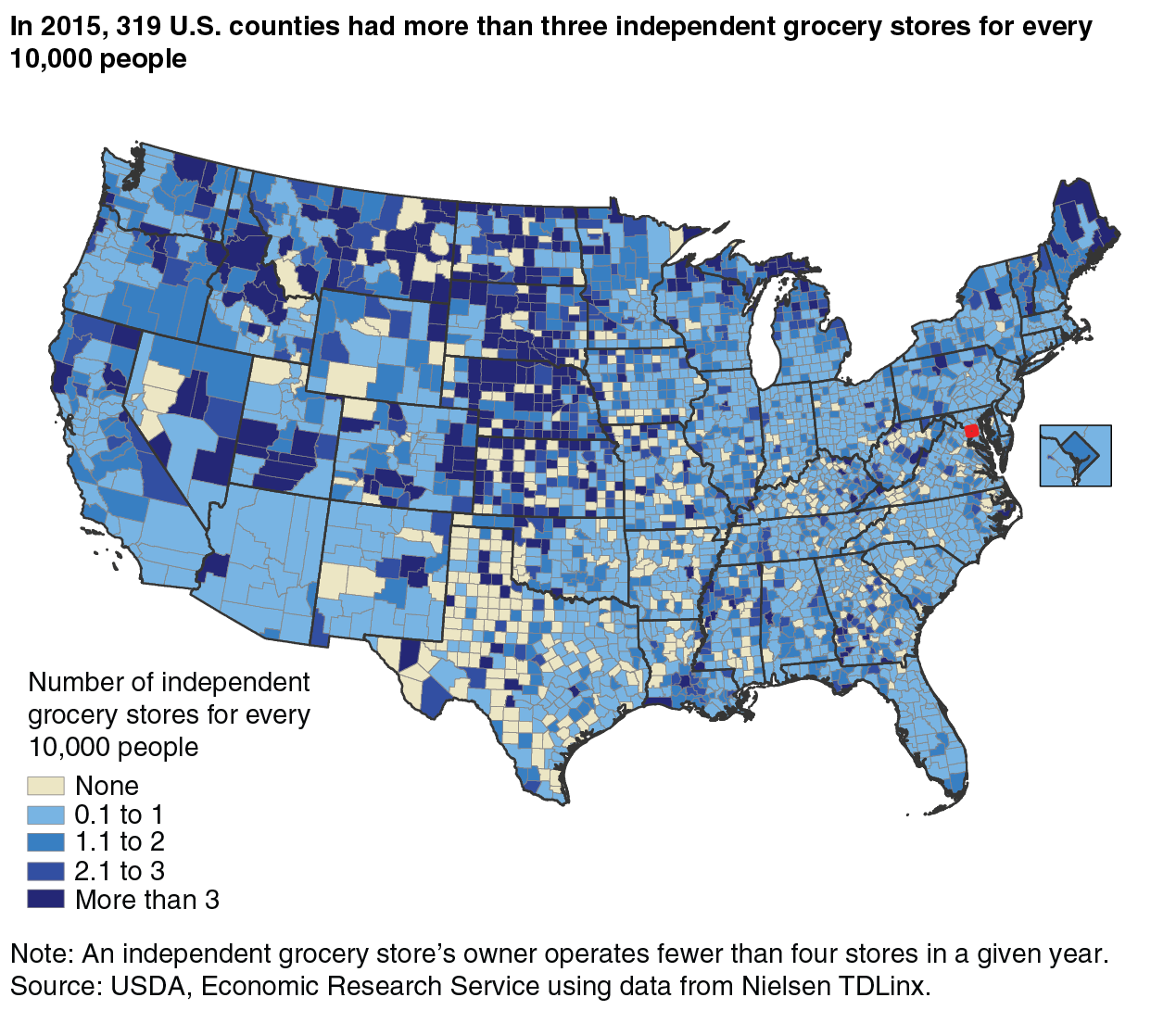
Despite Slow Growth From 2005 to 2015, Independent Grocery Stores Remain Important for Rural Communities
- by Clare Cho
- 2/5/2018
Independent grocery stores play an important role in U.S. food retailing. Past studies found that these stores can be attuned to the needs of the community and offer lower prices for certain products or specialize in ethnic foods in high demand by local residents. Other studies indicate their role in providing employment opportunities and tax revenues and in helping to ensure access to grocery foods in low-income and rural areas where chain grocery stores tend not to locate. A recent ERS study used Nielsen’s TDLinx data to examine the number of independent grocery stores—those whose owners operate fewer than four stores—and their sales in 2015, and how the number of stores has changed over the last decade. The study found that independent grocery stores continue to outnumber chain grocery stores in remote rural counties and locate at higher rates in counties with a large share of Black and Hispanic residents.
Grocery stores—stores with a full line of major food departments and at least $1 million in sales—can be classified as either independent or chain stores. In 2015, independent grocery stores generated $70 billion in sales, or 11 percent of U.S. grocery sales. They made up at least half of the food retailers in 44 percent of U.S. counties and at least half of the grocery sales in 19 percent of counties. The 576 counties where independent stores accounted for at least half of the grocery sales were mostly rural and contained 4 percent of the total U.S. population. Examining the number of independent grocery stores per capita reveals that rural counties, particularly in the Great Plains region, had the highest number of independent grocery stores per capita in 2015.
In 2015, rural counties not adjacent to an urban county, or remote rural counties, had an average of 2.1 independent grocery stores, outnumbering chain grocery stores (1.9 stores). The total number of independent grocery stores in the United States showed little growth over the decade, increasing from 21,113 in 2005 to 21,510 in 2015. Nevertheless, compared to urban counties, rural counties were more likely to have an increase of independent stores over the decade and less likely to have an increase of chain stores. In addition, the share of small independent grocery stores with more limited types and varieties of food products increased by 3 percent between 2005 and 2015 in remote rural counties, indicating their continued significance for these communities.
Independent grocery stores were also important for counties with a high share of Blacks and Hispanics. On average, in 2015, the percentage of independent stores was 1.54 percent higher in a county with an additional percentage point of Black residents, but only 0.44 percent higher for chain stores. Similarly, for each additional percentage point of Hispanic residents, there were 1.13 percent more independent stores and 0.41 percent more chain stores.
This article is drawn from:
- Volpe, R. (2017). Independent Grocery Stores in the Changing Landscape of the U.S. Food Retail Industry. U.S. Department of Agriculture, Economic Research Service. ERR-240.
You may also like:
- Retailing & Wholesaling - Retail Trends. (n.d.). U.S. Department of Agriculture, Economic Research Service.


